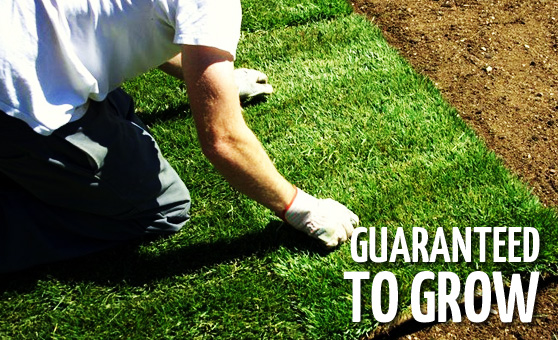What size are the rolls of turf?
1 ROLL = 1m2. Each roll is 450mm by 2.2metres, 25mm(1inch) thick and weigh about 10kg when dry.
How long will the grass keep before it has to be laid?
In the cooler months, the grass will keep for 2-3 days and in the hotter months, it keeps only 1-2 days. In warmer months we recommend laying as soon as it is delivered.
How do I calculate how many metres I need?
Multiply the two sides together ie: 10mx7m = 70m2. For irregular sites, divide up into smaller triangles/ or squares, calculate each individual area then add them together.
What type of soil should be used?
We recommend that you use a good quality organic Turf underlay.
Can I lay turf on sand?
Yes, but you will need to put a good organic fertiliser such as chicken manure down first before laying the turf.
How do I prepare the ground when laying on clay?
Apply Gypsum (as per instructions on packet), which is a clay breaker, followed by Turf underlay on top.
How much soil should I use?
We recommend at least 50mm in most circumstances.
How many square metres will I fit into a trailer?
About 50 square metres. Which is 1 pallet and can weigh between 500kg and 1 tonne
When is the best time to fertilise my lawn?
Before laying, the soil should be fertilized and again two weeks after laying, then every eight weeks for the first twelve months.
Once established, apply fertiliser early spring, early summer and mid autumn. The autumn fertilising is for the lawn to get through the winter months and retain colour.
How and when to water my lawn?
Newly transplanted turf requires extra care (especially water) for the first few weeks.
Turf must be kept moist at all times until the roots have taken.
During daylight hours leaf should not be allowed to dry out and edge areas near concrete or brick will suffer the most. A soaker hose is the preferred method of watering as these keep the turf moist with the minimum amount of water and hence the least amount of flooding in the sub-soil area. Test for soil moisture with a 100mm/4” probe. Ground should be moist to this level. If the turf appears to lose colour during the first month after laying, watering has not been sufficient and should be immediately increased.
Once the turf has taken root, watering can be decreased to a level that will depend on the climatic conditions. As a guide, the lawn should receive 2-3 deep watering in summer per week, or 1 per week in winter, until full establishment (approx. 12 months). Once fully established, one deep watering per week is usually sufficient except in extreme conditions.
When should I mow my newly laid lawn?
The first mowing should not be done until the roots have taken and the turf is not easily lifted. The first mowing should only be a light trim, and never take more than a third of the leaf off in any single mowing.
What height should I mow my lawn?
Your lawn can be mown at various heights ranging from 15mm to 50mm, however correct height can depend on personal preference and climatic conditions. Mow higher in shady areas. It is recommended to raise your mowing height prior to winter.
How do I control weeds in my lawn?
Prevention is always better than cure. If your lawn is kept in a healthy and fertilised state, weed eradication is rarely necessary. If in the rare circumstance weed spray is required, we suggest that you first heavily fertilise when weeds are noticed, followed by at least two mows in a three-week period. This will usually reduce the problem to a minimum. If spraying is still required, there are several herbicides that can be used. We suggest correct weed identification and spray advice be obtained from your local nursery or supplier.
Should I top-dress my lawn?
Top dressing should only be required to correct any unevenness in ground preparation. If top dressing is required, it should only be done in late spring or early summer with a sandy loam and no more than 10mm should be applied per top dressing. The tips of the leaves should still be visible after top dressing. Quite often a low mowing combined with fertilizing and deep watering in spring will achieve the same results easier and cheaper than topdressing.
Can I apply an insecticide to my lawn?
Yes, you can. If insect damage occurs, apply any turf-registered insecticide following the manufacturer’s instructions. A common insect that damages lawns is Lawn Army Worm or Sod-web worm.
If a large population of white moths are noticed of an evening around your home, be prepared to spray in the coming weeks.
For more details or to get best rates for any variety of turf, kindly fill out our online form below to get our price list or call Eturf at 49 300 100.



















